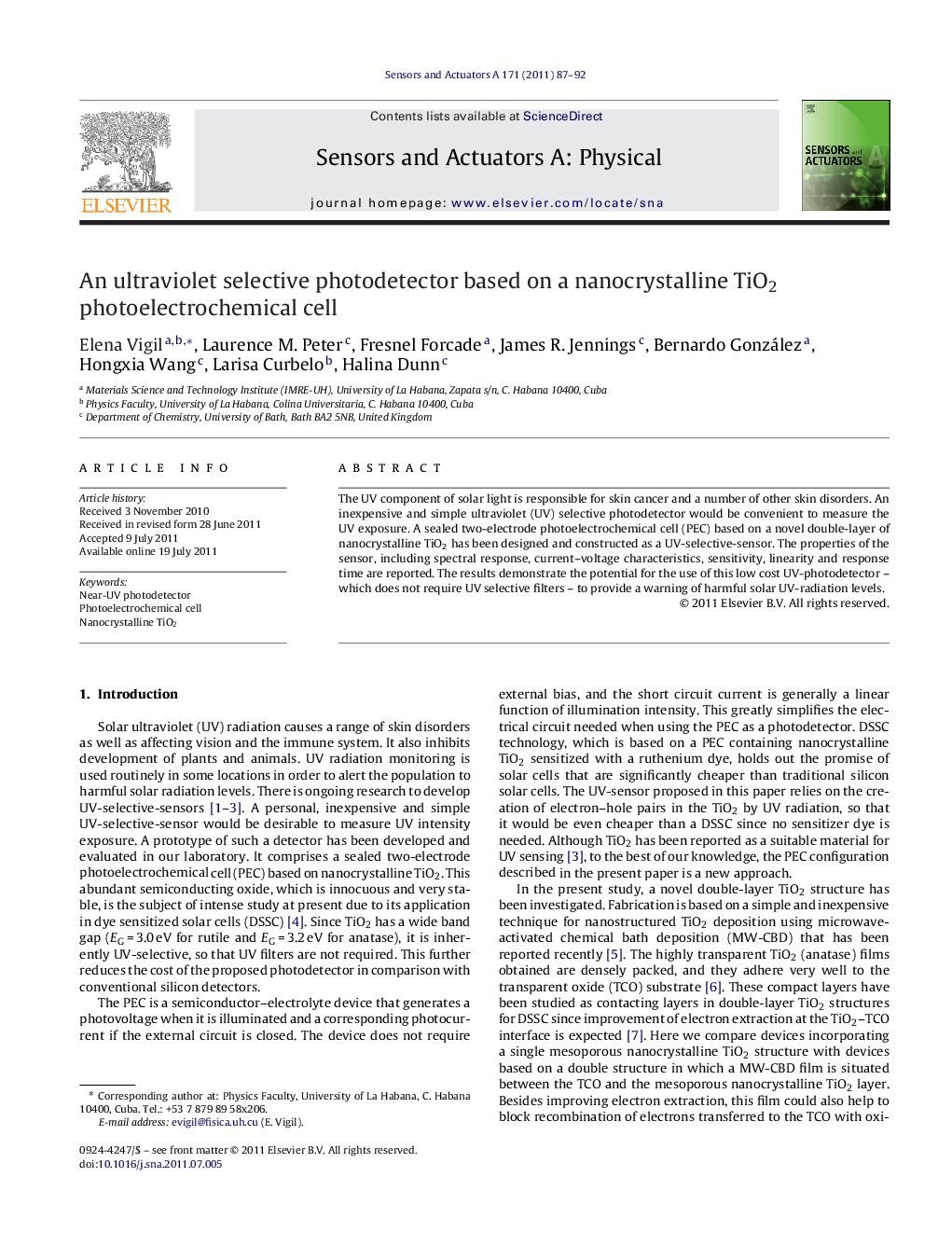| Article ID | Journal | Published Year | Pages | File Type |
|---|---|---|---|---|
| 737933 | Sensors and Actuators A: Physical | 2011 | 6 Pages |
Abstract
The UV component of solar light is responsible for skin cancer and a number of other skin disorders. An inexpensive and simple ultraviolet (UV) selective photodetector would be convenient to measure the UV exposure. A sealed two-electrode photoelectrochemical cell (PEC) based on a novel double-layer of nanocrystalline TiO2 has been designed and constructed as a UV-selective-sensor. The properties of the sensor, including spectral response, current–voltage characteristics, sensitivity, linearity and response time are reported. The results demonstrate the potential for the use of this low cost UV-photodetector – which does not require UV selective filters – to provide a warning of harmful solar UV-radiation levels.
Related Topics
Physical Sciences and Engineering
Chemistry
Electrochemistry
Authors
Elena Vigil, Laurence M. Peter, Fresnel Forcade, James R. Jennings, Bernardo González, Hongxia Wang, Larisa Curbelo, Halina Dunn,
